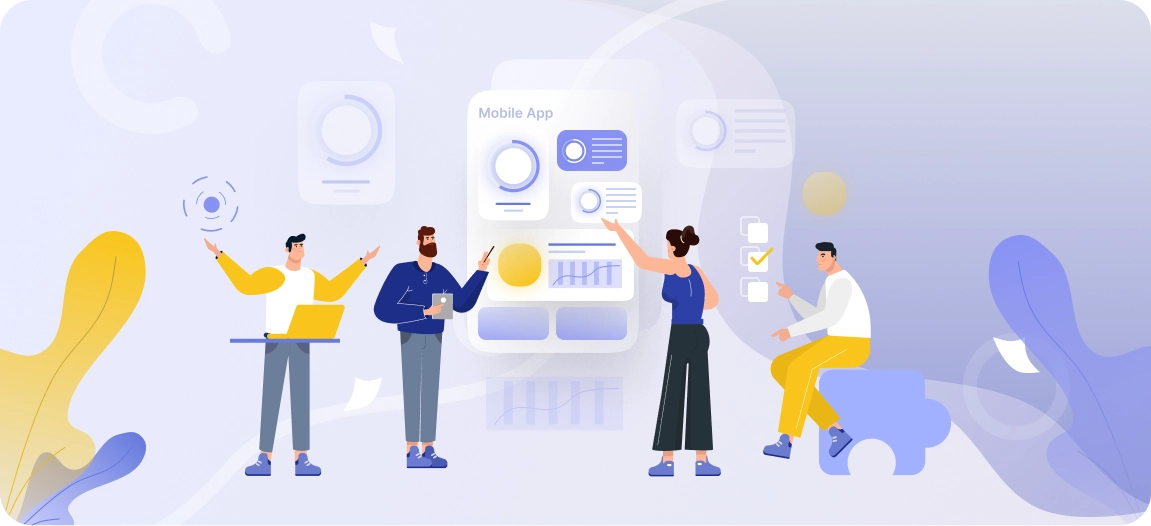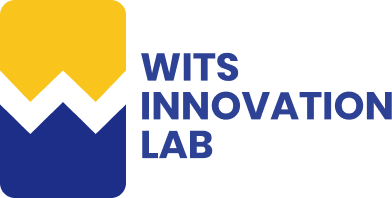Published - 2 years ago | 6 min read
AI, IoT, and Sustainability: Can Technology Help Save the Planet?

AI, IoT, and sustainability are powerful allies at the crossroads of technological evolution and ecological preservation. The synergy of these elements has far-reaching implications for the very fabric of human life and the earth's delicate ecosystem. This intricate dance between innovation and stewardship beckons a detailed exploration.
Artificial Intelligence (AI): Beyond Automation
The Dawn of Intelligent Energy Management
AI has redefined the energy sector. AI models, from wind farms to solar installations, are tailoring energy distribution like never before.
Case Study: Google's DeepMind: What does a 40% reduction in energy consumption mean in real terms? Imagine cities going off the grid, all powered by intelligent decisions made by algorithms. The implications for carbon emissions and cost savings are staggering.
Case Study: Google's DeepMind: What does a 40% reduction in energy consumption mean in real terms? Imagine cities going off the grid, all powered by intelligent decisions made by algorithms. The implications for carbon emissions and cost savings are staggering.
Precision Agriculture: Feeding the Future
Farmers use AI-driven models to know when to plant, water, and harvest. This precision is not just about profit but global food security.
Case Study: Blue River Technology: Using AI to detect and spray individual plants with pesticides has reduced chemical usage by 90%. This has environmental, health, and cost-saving implications.
Case Study: Blue River Technology: Using AI to detect and spray individual plants with pesticides has reduced chemical usage by 90%. This has environmental, health, and cost-saving implications.
Healthcare and Environmental Diseases
AI is becoming instrumental in tracking diseases caused by environmental factors. AI is an ally in public health by predicting outbreaks and supporting diagnostics.
Case Study: IBM's Watson Health and the City of Beijing: Facing alarming levels of air pollution, Beijing turned to IBM's Watson to predict smog levels and related health risks. The system provided a 72-hour forecast, allowing citizens to take precautionary measures and the government to implement timely regulations. This cooperation between technology and governance became a beacon for public health management in urban landscapes.
Case Study: IBM's Watson Health and the City of Beijing: Facing alarming levels of air pollution, Beijing turned to IBM's Watson to predict smog levels and related health risks. The system provided a 72-hour forecast, allowing citizens to take precautionary measures and the government to implement timely regulations. This cooperation between technology and governance became a beacon for public health management in urban landscapes.
Wildlife Conservation: The Silent Watcher
Conservation takes center stage in a world where wildlife is increasingly threatened by human encroachment and climate change. Traditional methods of tracking and preserving animal species are labor-intensive and often imprecise.
AI is stepping into this void, offering unique solutions that augment human efforts. AI has become an essential tool in the conservationist's toolbox by employing complex algorithms that can analyze visual data, recognize individual animals, and even predict behavior.
Case Study: Wildbook: AI algorithms analyze images from the public to identify and track individual animals, aiding conservation efforts. It's a massive undertaking, binding the public and technology in a shared cause.
AI is stepping into this void, offering unique solutions that augment human efforts. AI has become an essential tool in the conservationist's toolbox by employing complex algorithms that can analyze visual data, recognize individual animals, and even predict behavior.
Case Study: Wildbook: AI algorithms analyze images from the public to identify and track individual animals, aiding conservation efforts. It's a massive undertaking, binding the public and technology in a shared cause.

Internet of Things (IoT): The Silent Revolution
Smart Cities: Beyond Futuristic Skylines
IoT isn't about shiny gadgets; it's about creating responsive environments that adapt to human needs while respecting ecological boundaries.
Case Study: Singapore: Through smart water management, intelligent transport, and waste reduction, Singapore stands as a testament to what's achievable.
Case Study: Singapore: Through smart water management, intelligent transport, and waste reduction, Singapore stands as a testament to what's achievable.
Agriculture's New Ally
IoT in agriculture goes beyond optimizing yields; it's about understanding the soil, conserving water, and ensuring that the food that reaches our tables is sustainably grown.
Case Study: John Deere's Precision Farming: A pioneering name in agriculture, John Deere's integration of IoT technology is transforming farms into smart ecosystems. With real-time soil analysis and precision water management, farmers can make real-time data-driven decisions that maximize yield while minimizing waste. Synergy represents a quantum leap in sustainable farming, from planting seeds at optimal depth and spacing to the precise application of nutrients, machinery, and data analytics.
Case Study: John Deere's Precision Farming: A pioneering name in agriculture, John Deere's integration of IoT technology is transforming farms into smart ecosystems. With real-time soil analysis and precision water management, farmers can make real-time data-driven decisions that maximize yield while minimizing waste. Synergy represents a quantum leap in sustainable farming, from planting seeds at optimal depth and spacing to the precise application of nutrients, machinery, and data analytics.
Transportation: A New Era
Traffic congestion isn't just a daily annoyance; it's an environmental concern. IoT is paving the way for intelligent transportation systems that ease congestion and reduce pollution.
Case Study: London's Congestion Charge: IoT-enabled systems have effectively reduced traffic, reducing commute times and emissions.
Case Study: London's Congestion Charge: IoT-enabled systems have effectively reduced traffic, reducing commute times and emissions.
Healthcare and IoT: Remote and Responsible
IoT is revolutionizing healthcare, not just in cutting-edge hospitals but in remote villages. The impact is profound, from monitoring chronic conditions to delivering healthcare in inaccessible areas.
Case Study: Project ECHO (Extension for Community Healthcare Outcomes): What started as a humble initiative in New Mexico has blossomed into a global healthcare movement. Project ECHO leverages IoT technology to create a virtual knowledge-sharing network, connecting healthcare specialists with local practitioners across vast distances. Whether it's managing Hepatitis C in rural America or maternal care in Africa, this telementoring platform is democratizing medical expertise. The digital bridges built by Project ECHO ensure that quality healthcare is not a luxury confined to urban centers but a human right accessible to all.
Case Study: Project ECHO (Extension for Community Healthcare Outcomes): What started as a humble initiative in New Mexico has blossomed into a global healthcare movement. Project ECHO leverages IoT technology to create a virtual knowledge-sharing network, connecting healthcare specialists with local practitioners across vast distances. Whether it's managing Hepatitis C in rural America or maternal care in Africa, this telementoring platform is democratizing medical expertise. The digital bridges built by Project ECHO ensure that quality healthcare is not a luxury confined to urban centers but a human right accessible to all.

The Nexus of Sustainability
Water Management: Every Drop Matters
Water scarcity is a reality that many regions face. IoT is turning this around with smart systems that optimize usage, detect leaks, and predict future water needs.
Example: The City of Cape Town utilized IoT during its water crisis, drastically reducing waste and averting a catastrophe.
Example: The City of Cape Town utilized IoT during its water crisis, drastically reducing waste and averting a catastrophe.
Building the Smart Grid
Integrating renewable energy sources requires intelligent systems. AI is building the smart grid, a flexible and efficient energy network that reduces reliance on fossil fuels.
Case Study: Chattanooga, Tennessee, leveraged AI to build a smart grid that improved reliability, efficiency, and integration of renewable energy sources.
Case Study: Chattanooga, Tennessee, leveraged AI to build a smart grid that improved reliability, efficiency, and integration of renewable energy sources.

Challenges, Risks, and Ethical Dilemmas
Ethical AI: A Moral Imperative
From bias in algorithms to the risk of automation in employment, ethical AI is not a sidebar conversation; it's central to responsible innovation.
The Hidden Cost of IoT
The manufacture and disposal of billions of IoT devices carry an environmental cost. Addressing this requires a rethinking of materials, recycling, and consumption patterns.
The Digital Divide: Technology for All?
AI and IoT promise a brighter future, but what about those left behind in the digital divide? Ensuring inclusivity is not just a social responsibility; it's an essential part of sustainable development.

Future Perspectives: Where Do We Go from Here?
Collaborative Efforts: A Global Undertaking
No single entity can leverage the potential of AI and IoT alone. Collaborative efforts between governments, industries, and academia are key.
Example: The European Union's Horizon 2020 is a multi-billion-euro initiative fostering collaboration in research and innovation, including sustainability projects.
Example: The European Union's Horizon 2020 is a multi-billion-euro initiative fostering collaboration in research and innovation, including sustainability projects.
Education and Public Engagement
The transformation driven by AI and IoT must be a shared journey. Education, awareness, and public participation are essential. Technology must be a tool for all, not a privilege for a few. One real-world example of this is the "CSforAll" initiative in the United States, a nationwide movement to empower all K-12 students to learn computer science and be equipped for the digital economy.
The initiative involves partnerships between schools, districts, and communities to provide every student with rigorous computer science education.
Regulation and Standardization
As AI and IoT become omnipresent, setting global standards and regulations becomes paramount. This isn't just about legal compliance; it's about building a safe, ethical, and sustainable future.
A real-world example of regulation and standardization in AI and IoT can be found in the European Union's approach to AI. The European Commission has proposed the Artificial Intelligence Act to create a legal framework for trustworthy AI. This comprehensive set of rules will standardize AI use across the EU, setting high standards for AI systems regarding transparency, accountability, and user control. It covers everything from biometric identification to critical infrastructure, and it has significant implications for developing and deploying AI in Europe.
A real-world example of regulation and standardization in AI and IoT can be found in the European Union's approach to AI. The European Commission has proposed the Artificial Intelligence Act to create a legal framework for trustworthy AI. This comprehensive set of rules will standardize AI use across the EU, setting high standards for AI systems regarding transparency, accountability, and user control. It covers everything from biometric identification to critical infrastructure, and it has significant implications for developing and deploying AI in Europe.

Conclusion
AI, IoT, and sustainability are not just intersecting paths; they are intertwined destinies. The melding of these forces isn't about algorithms, devices, or buzzwords; it's about people, our planet, and our shared future.
The stories, examples, and cases mentioned are not isolated successes but signposts pointing the way forward. But this path isn't without its complexities, risks, and challenges. It demands more than technological innovation; it calls for ethical discernment, social inclusivity, global collaboration, and an unwavering commitment to sustainability.
The question isn't just whether technology can help save the planet; the real question is, are we ready to leverage it wisely, responsibly, and inclusively? The tools are here; the possibilities are immense. The next step is ours to take.
The stories, examples, and cases mentioned are not isolated successes but signposts pointing the way forward. But this path isn't without its complexities, risks, and challenges. It demands more than technological innovation; it calls for ethical discernment, social inclusivity, global collaboration, and an unwavering commitment to sustainability.
The question isn't just whether technology can help save the planet; the real question is, are we ready to leverage it wisely, responsibly, and inclusively? The tools are here; the possibilities are immense. The next step is ours to take.

Written by / Author
Manasi Maheshwari
Found this useful? Share With
Top blogs
Most Read Blogs
Wits Innovation Lab is where creativity and innovation flourish. We provide the tools you need to come up with innovative solutions for today's businesses, big or small.
© 2025 Wits Innovation Lab, All rights reserved
Crafted in-house by WIL’s talented minds

